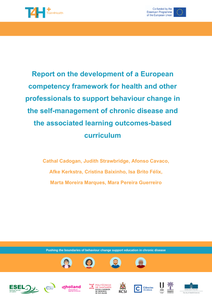Chronic diseases represent a significant burden for the society and health systems; addressing this burden is a key goal of the European Union policy. Health and other professionals are expected to deliver behaviour change support to persons with chronic disease. A skill gap in behaviour change support has been identified, and there is room for improvement. Train4Health is a strategic partnership involving seven European Institutions in five countries, which seeks to improve behaviour change support competencies for the self-management of chronic disease. The project envisages a continuum in behaviour change support education, in which an interprofessional competency framework, relevant for those currently practising, guides the development of a learning outcomes-based curriculum and an educational package for future professionals (today’s undergraduate students).
DOCUMENT

BackgroundIt can be very challenging for practitioners to talk with autistic children, especially when the conversation calls for self-regulation. Self-regulation is inextricably linked to awareness of oneself and others in social contexts. Encouraging the need for autonomy could help increase self-awareness and awareness of others in social events, which in turn could strengthen self-regulation. However, little is known about how autonomy influences competence in reasoning about self and others when regarding social events in which autistic children participate. This study explores the reasoning of self-other awareness on a microlevel timescale using ipsative, dynamic approaches to autism. The central question in this study is: to what extent can autonomy-provided scaffolding (APS) elicit high levels of reasoning about self-others in social events (RSS) over time?MethodWe used video-taped interaction data from three sessions between one autistic child and a practitioner, contextualized by a set of animated DSM-5-based items of social events on which the child was asked to reflect. Interaction variables were the child's level of RSS and the practitioner's level of APS. We coded the real-time interaction.ResultsFirst, when exploring the dynamics of the microdata, we found contingency over time within sessions. Second, over the sessions, the practitioner showed a stable high level of APS, whereas the child's level of RSS increased. Third, a coupling effect between the level of APS and RSS was found within and over sessions. Salient is that the child and practitioner increasingly adapted to each other over the three sessions, and over time, high-level APS of the practitioner elicited higher levels of RSS of the child.DiscussionBecause the child showed a significant improvement in RSS over time, our research question provides a promising perspective. Contrary to what one might expect in autism, APS supported the performance of the child in reasoning about self-others in social situations. These outcomes underline the importance of giving voice to autistic children. The results may encourage researchers to develop strategies and tools that can help give a voice to children, to gain more insight into the child's reasoning. This may further develop self-other awareness and self-regulation in the social events of autistic children.
DOCUMENT
Learning teams in higher education executing a collaborative assignment are not always effective. To remedy this, there is a need to determine and understand the variables that influence team effectiveness. This study aimed at developing a conceptual framework, based on research in various contexts on team effectiveness and specifically team and task awareness. Core aspects of the framework were tested to establish its value for future experiments on influencing team effectiveness. Results confirmed the importance of shared mental models, and to some extent mutual performance monitoring for learning teams to become effective, but also of interpersonal trust as being conditional for building adequate shared mental models. Apart from the importance of team and task awareness for team effectiveness it showed that learning teams in higher education tend to be pragmatic by focusing primarily on task aspects of performance and not team aspects. Further steps have to be taken to validate this conceptual framework on team effectiveness.
DOCUMENT
